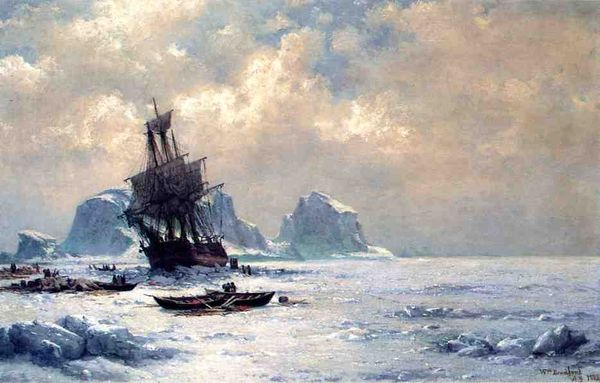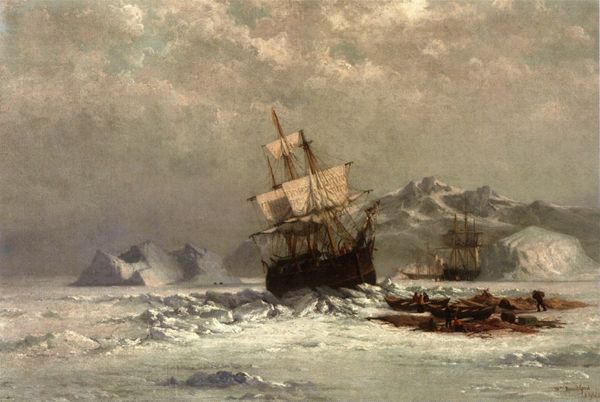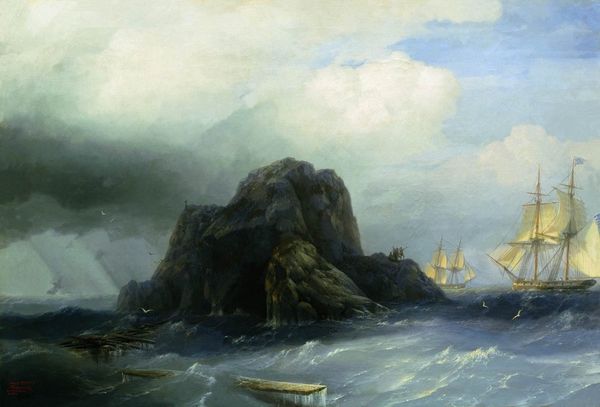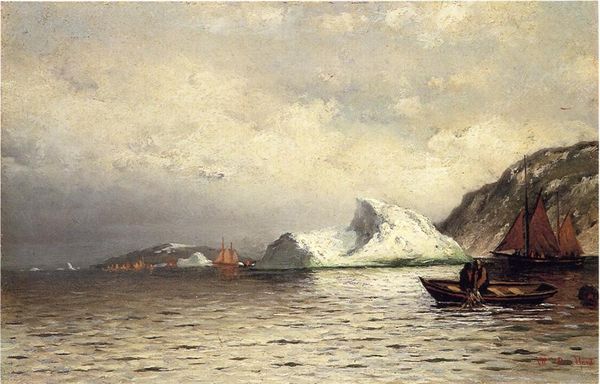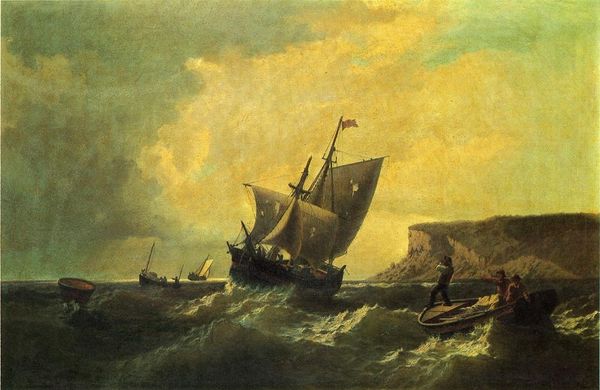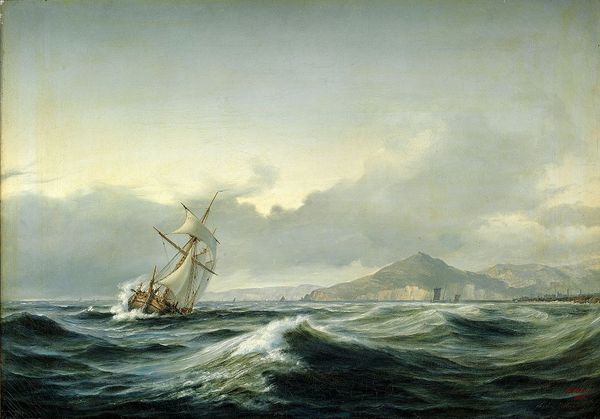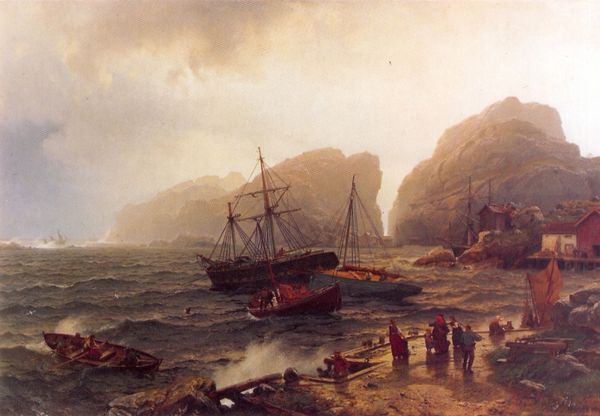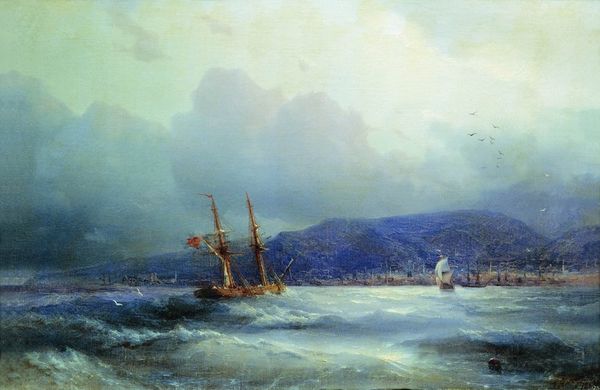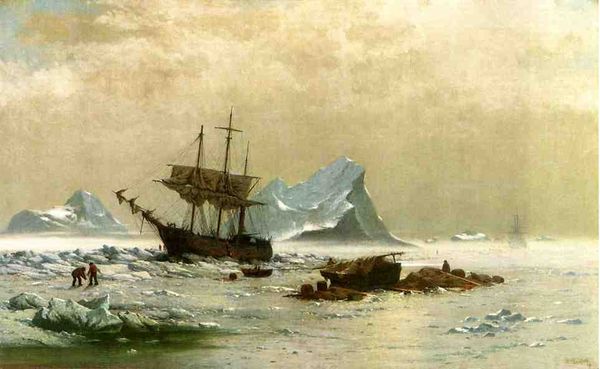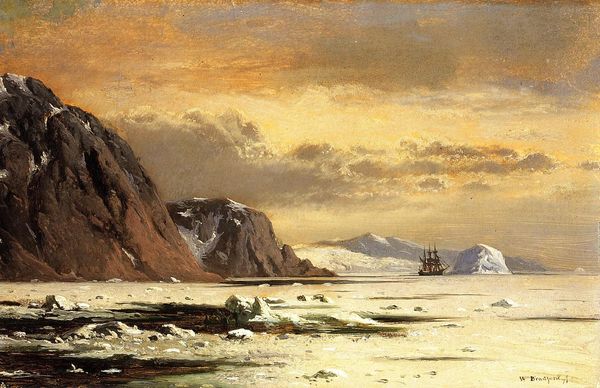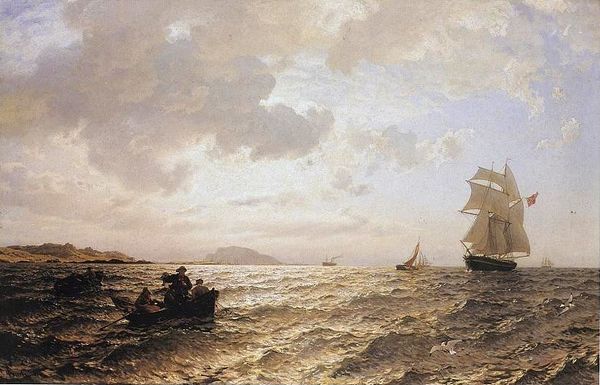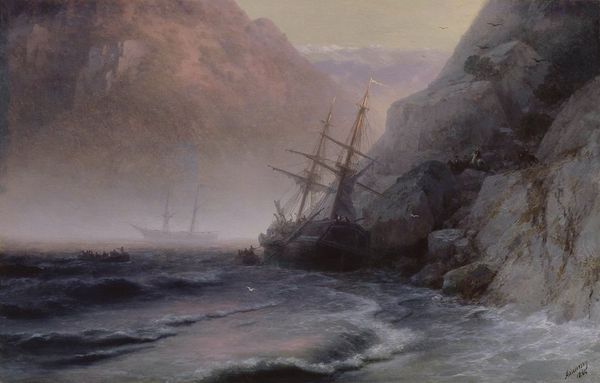
Morning on the Artic Ice Fields 1880
0:00
0:00
williambradford
Minnesota Marine Art Museum, Winona, MN, US
Copyright: Public domain
Curator: This is "Morning on the Artic Ice Fields", an oil painting by William Bradford, created around 1880. It resides here at the Minnesota Marine Art Museum. What are your initial impressions? Editor: Striking, yet somber. The subdued palette of greys, browns, and whites certainly evokes a sense of the Arctic’s desolation, even before considering the presence of the ice. The diffused lighting makes me think of atmospheric perspective. Curator: Bradford himself undertook several expeditions to the Arctic, aboard whaling ships in the 1860s, using his experiences to depict this environment and its interaction with human endeavors. His work offers a window into how Western eyes perceived, and projected themselves onto, the polar landscape during a period of intense exploration and exploitation. Editor: Indeed, that large ship locked in the ice visually dominates much of the work. You immediately see how small and imperiled these men must have felt within this icy expanse. Do you get the sense it is trapped and marooned? Curator: Bradford was lauded in his time for his perceived realism, fueled in part by the public's burgeoning fascination with both scientific discovery and the sublime experience. These polar landscapes appealed on both fronts. He even had photographs taken during his expeditions which he then translated to his paintings. Editor: I note, though, how his romantic vision affects that realism. The composition feels arranged, designed, rather than observed. The dark hull, placed left of center, strongly anchored by the landmass—creating a stable triangle shape. Curator: That's true. Even within its apparent naturalism, the painting inevitably promotes an image reflecting societal values about our relation to this environment at the time. These landscapes were about something other than nature itself. This was the Gilded Age! Editor: Ultimately, its evocative power lies in its successful blending of formal structure and emotional resonance, giving lasting power to that experience, despite how manufactured it may have been in that sense. Curator: Precisely! This work illuminates both Bradford’s artistry and the values inherent in representing this frozen frontier in the late 19th century.
Comments
No comments
Be the first to comment and join the conversation on the ultimate creative platform.
